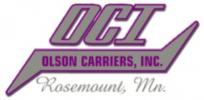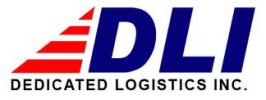Slip-seating: Can it make trucking more productive?
Submitted by Bill on
One firm argues it’s the only way to maximize per-truck revenue while reducing taxes.
Apr 27, 2016Sean Kilcarr | Fleet Owner
It’s long been an unspoken rule of sorts in trucking: one driver assigned to one truck, or in the case of team operations, two drivers to one truck. Only in occasional circumstances, such as routine maintenance or breakdowns, is a driver or team assigned to a different truck.
Yet Duff Swain, president of the consulting firm Trincon Group LLC, believes that mindset must change – and fast.
The reason? Assigning multiple drivers to one truck will be the only way to cope with the rising cost of equipment, regulatory mandates, and customer demands for faster shipment times, while allowing motor carriers to generate the profit levels necessary to keep their operations viable.
“It’s human nature to resist change,” Swain explained to Fleet Owner. “When you are forced to change by government rules or customer pressures, you comply, but it’s not integrated into the established mindset. So we need to change the underlying thinking about trucking operations to gain greater productivity.”
Swain recently authored a white paper on the subject and posed this calculation: In theory, new trucks today are typically covered by a 700,000-mile warranty and can be operated 24/7, only requiring idle time of two to four hours every 25,000 miles for an oil change.
“That is the way they are designed and until we start using them that way, they are underutilized,” Swain argued. “Companies that learn to fully utilize their trucks will make more money than those who don’t. That’s an economic fact, but the pressures created by the driver shortage and new hours-of-service rules have obscured it.”
He also thinks TL fleets currently have about 5% of the trucks parked due to a lack of drivers.
Over top of that basic operating tenant, Swain added, is a fiscal one: Trucks can be depreciated over three years and they are the only capital item in the tax code that allows that kind of accelerated depreciation.
But that generates a conundrum, Swain said:
· You should operate trucks 700,000 miles in three years if you want to maximize revenue, minimize expense and pay less tax on your profits.
· But you cannot drive a truck 700,000 miles in three years with a single driver.
He pointed out that manufacturers, wholesalers and major retailers are today typically engaging their assets in a 24/7 just-in-time environment. “But truckload carriers are the only part of the supply chain that do not routinely operate on a 24/7 basis,” Swain stressed.
For example, he said, look at intermodal shipments:
· They come to the U.S. on a ship 24/7.
· They are shipped inland on a railroad 24/7.
· They are handed over to a motor carrier who typically uses a single truck piloted by a single driver (14/6) and could not run 24/7 if they wanted to.
· They are delivered to large retailers who move the inventory through storage to retail shelves 24/7.
“Consequently, where do you see inventory delayed? It is delayed in container storage yards waiting for truckers to deliver it,” Swain noted.
That’s why he believes, going forward, multiple drivers need to be assigned to a single truck in order to keep that asset “in synch” with the rest of the supply chain, as well as help generate a profitable return.
“Furthermore, the cost of [new] trucks will continue to rise faster than inflation, primarily because of government regulations and technological enhancements to the vehicles,” Swain emphasized. “While technology is designed to improve efficiency and utilization, it still increases cost per unit. Additionally, it is increasing the spread between the value of trade-ins and new trucks, resulting in an increase of debt to equity issue.”
Thus, to his mind, Swain thinks increased productivity is the only way to offset that added expense.
“Trucking companies that increase truck productivity will have lower end cost, while those that don’t will incur greater total operating expense,” he stressed.
More Recent News Stories








